Euler Room live stream - november 2025
I took part in this year’s Euler Room live stream again
This is a pratice recording from the night before (on holiday in Santa Barbera!)
I took part in this year’s Euler Room live stream again
This is a pratice recording from the night before (on holiday in Santa Barbera!)
Amazing keynote by Lu Wilson at the ICLC conference in Barcelona.

I utilize audio sample playback in a few ways in my Soundb0ard application - I have one shot sample playback, and I have a Looper which uses a form of granular synthesis to time stretch.
Sample files are stored in PCM Wav files which have a header, followed by the audio data stored in an array of numbers, one per sample. Normal playback entails playing those samples back at sample rate at which it was recorded, e.g. 44,100 samples per second.
In order to pitch shift a sample playback, i.e. slow it down or speed it up, you have a few options. You can think of pitch shifting as resampling, e.g. to play a sample back at twice the speed, you could resample at half the original sample rate, i.e. remove half the samples, and then playback the resampled audio at the original sample rate; or to slow down playback to half-speed, you could play every sample twice.
However, what happens if you want a fractional pitch, such as 1.1 x original speed or 0.8? The naive way, which I’ve been using up till now, was to progress through the array at the fractional speed, i.e. instead of moving through the array 1 sample at a time, I would maintain a float read_idx, that would increment at the sample ratio, e.g. 1.1 x and then calculate the playback value as a linear interpolation between the two closest points in the audio data array. This works ok for some ratios, but some can sound a bit too gnarly.
Recently via a reddit thread I came across this wonderful resource - Sean Luke, 2021, Computational Music Synthesis, first edition, available for free at http://cs.gmu.edu/~sean/book/synthesis/
"But it turns out that there exists a method which will, at its limit, interpolate along the actual band-limited function, and act as a built-in brick wall antialiasing filter to boot. This method is windowed sinc interpolation."
Windowed Sinc Interpolation relies on this Sinc Function:
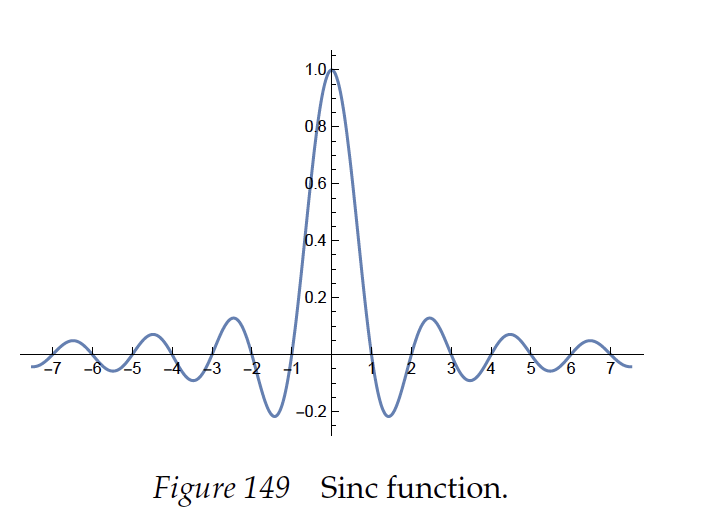
"you can use sinc to exactly reconstruct this continuous signal from your digital samples."
The links on this page can explain the math better, but basically in order to convert the frequency / sample rate, you walk through your original samples as the new sample rate and apply this sinc operation over a window of neighboring samples before and after your current sample, applying and summing the result of the sinc function.
From the Sean Luke book above, i converted this algorithm into code:
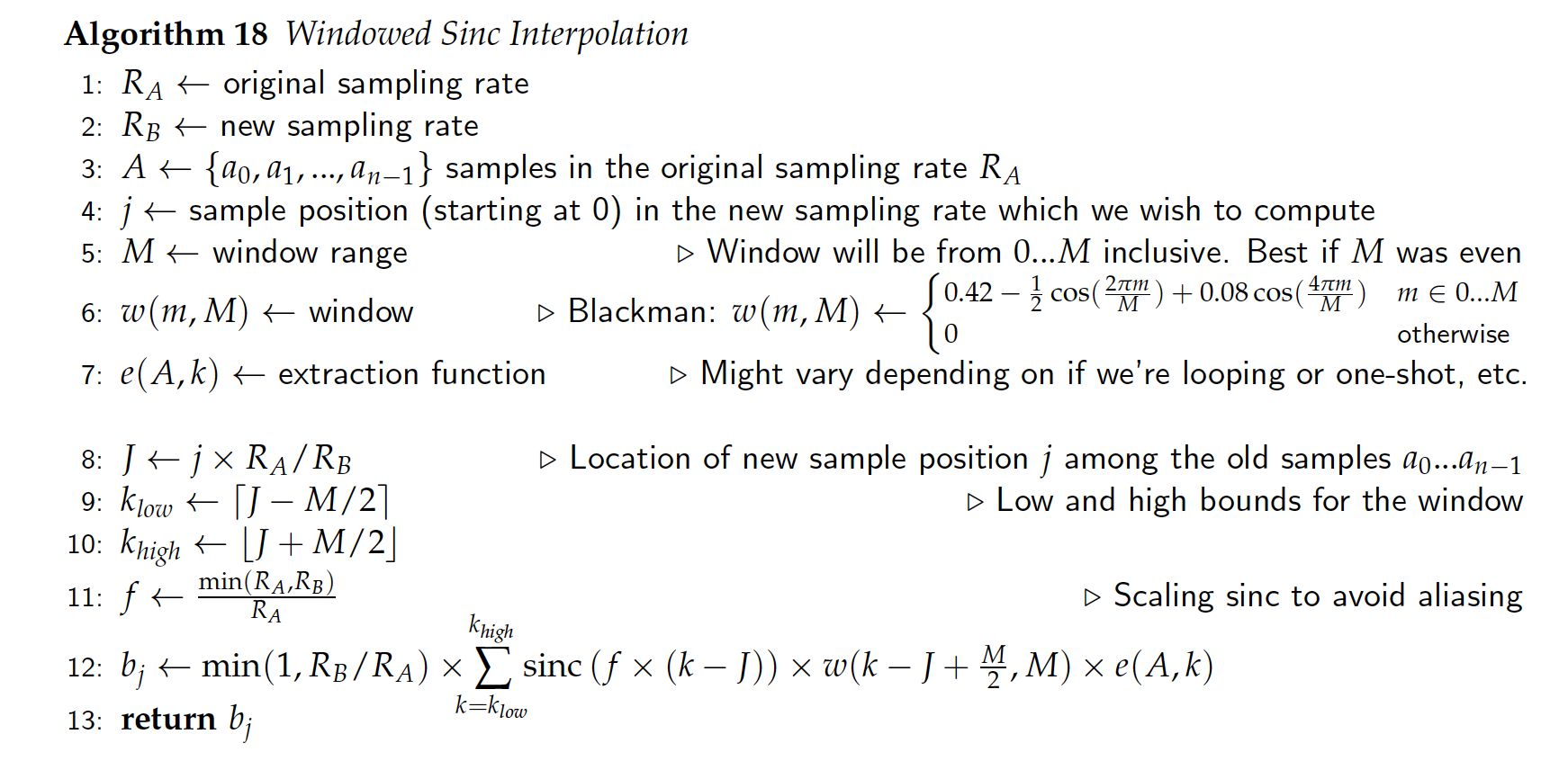
My first implementation didn’t work. The pitched signal was recognisable but was amped too high and sounded a lil janky. I think I mixed up some indexes with the value they should be representing.
I then found this amazing Ron's Digital Signal Processing Page, which has a clear concise implementation in Basic:
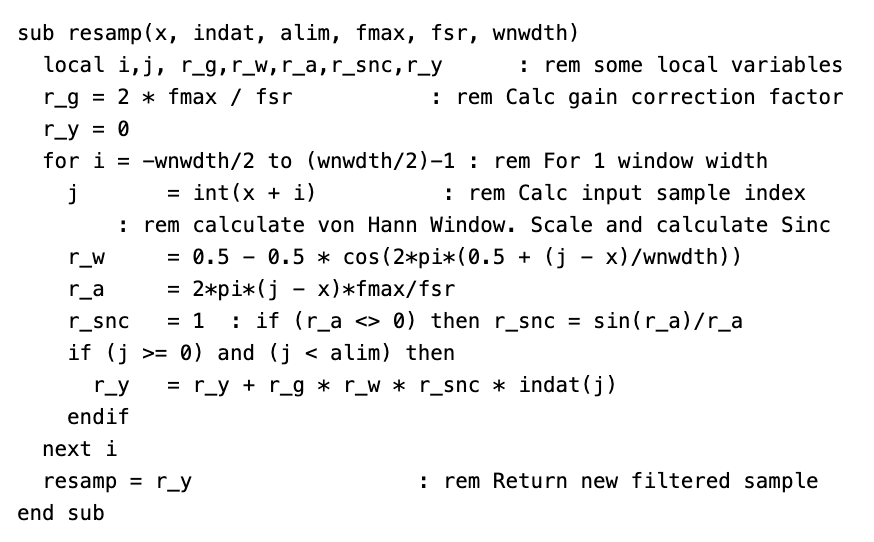
I implemented this in C++, and the code was clearer to read. After applying the repitch my signal was still clean but no matter what pitch ratio I used, my return signal was always double the original pitch. I must have made a calculation wrong. Possibly to do with handling stereo values.
Lazily I turned to Google Gemini…
> can you give me some example c++ code that will change the frequency of an array of samples using sinc ?
..
<boom>>
> can you expand that example to handle a stereo signal?
<boom>>
> using an interleaved stereo signal, please
<boom>>
> can you improve the algorithm using a hann window?
<boom>>
Ok, quite impressed. I dropped the code into my Looper, and it worked great.
Heres the before, with linear playback:
Heres the after using windowed sinc.
I think it sounds cleaner and better, so i think the implementation works? I’ll play with it a while and see if I prefer it. Here’s the current code:
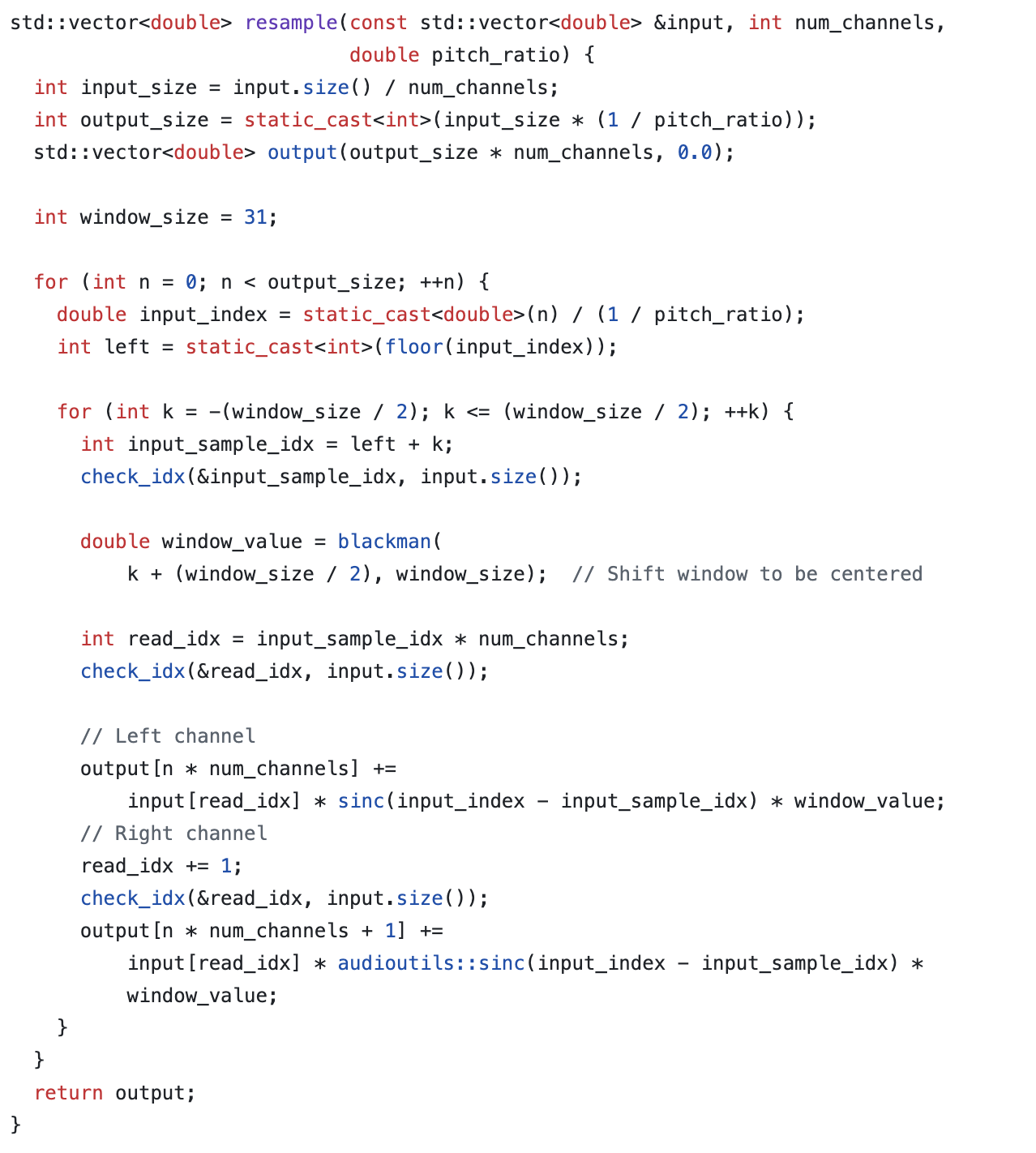
Job done?
No, there are some performance trade-offs.
I initially implemented it for the granular playback system, which meant only dealing with small arrays of data. However this meant I was doing redundant work, recalculating the same values upon each loop.
I moved the window sinc operation to be run once when you call the RePitch function. This becomes a performance bottleneck as those samples can be large arrays, and you dont want this being run on your audio thread as if it takes too long to run, you’ll experience audio drop outs. I looked to a newer feature of C++ to run the repitch algorithm, using std::async from <future>.
New radio show published, plus early announcement for Algoritmic Art Assembly 3 - coming in March 2026!
Played a remote Algorave show in Hyderabad!
Here’s my practice jam..
Finished a track I’d been working on recently, and decided to put together a wee bandcamp release of things I’ve finished this year. All written and performed with Soundb0ard.
I always love participating in the Solstice Livecoding Stream, there are so many amazing different performers from across the globe!

My session recording went live
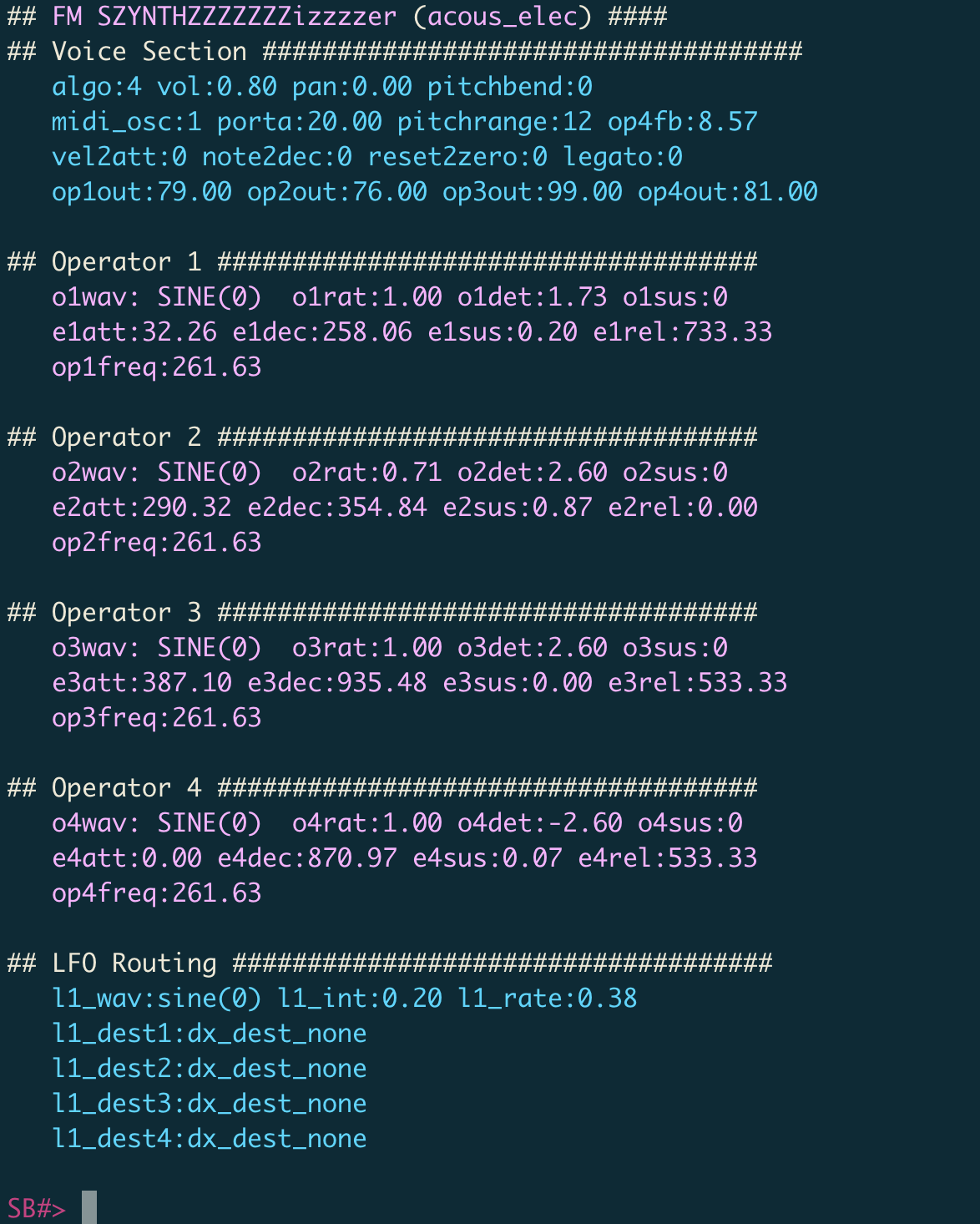
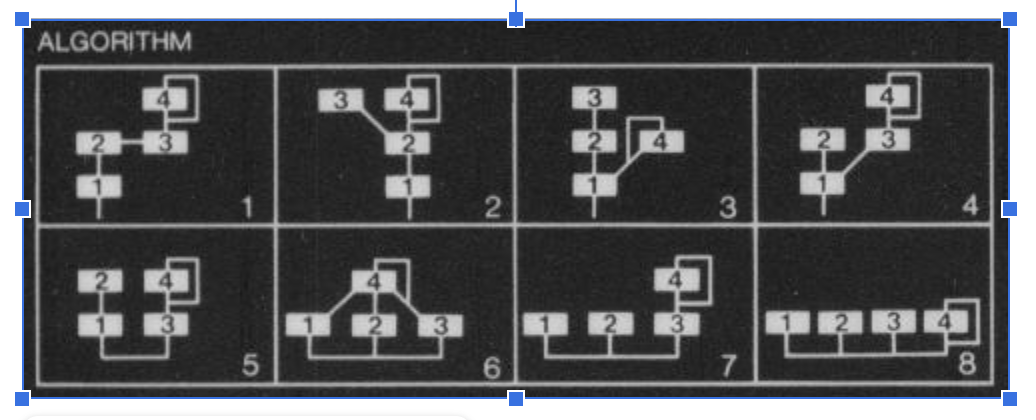
As I’ve been designing my own patches, I have become more curious about the original DX presets, some of which have their own kinda cult following, especially the Jazz Organ preset, which is maybe mostly widely down from Robin S’s “Show Me Love”. (See an excellent wee blog post on its history and mix from Mark Fell here.)
I discovered there are many resources online for sharing DX patches, which can be loaded into compatible synths. The DX line of synths use a binary format called SysEx to store and transmit patches. SysEx messages became an unofficial but de facto standard, and you can find lots of SysEx files online. The ones I found were specifically Midi bulk data messages containing 32 Voice VMEM. Specifically this has a 6 byte header, then 32 voices stored in 4096 bytes, and a closing 2 bytes footer.
While searching I found many Sysex librarian programs which allow you to manage and apply the voices but I couldn’t find what I was looking for - a way to just display the settings stored within the DX100 SysEx files. The closest I did find was this dxsyx, a “C++ library for manipulating DX7 SysEx files”, which offers a human readable YAML output, which is exactly what I was looking for, however that library is only the DX7 with its 6 operators, and not compatible with DX100 Sysex format. The original Yamaha DX synth, the DX7, has 6 Operators which are combined into 32 algorithms. The later DX100 and compatible DX21 and DX27, all used 4 Operators organized in 8 algorithms.
I decided to write my own parser, I figured it could be quite a fun exercise! I borrowed quite a lot of code from the before-mentioned dxsyx, a lot of the header checks and the general approach. Quite simple really, read the file into a data array (std::vector<uint8_t>), and peel it off byte by byte, mapping the bytes to the expected Sysex fields. Where my dumper differs from dxsyx is in the parsing of the bytes, which need to be mapped correctly to the values needed for the Voice and Operator values, specific to the synth model.
The hardest part was finding an exact specification of the DX100 Sysex format to ensure the binary data I was reading was being mapped to the correct data field.
The DX-100 manuals I could find listed the Sysex VMEM data fields in detail:
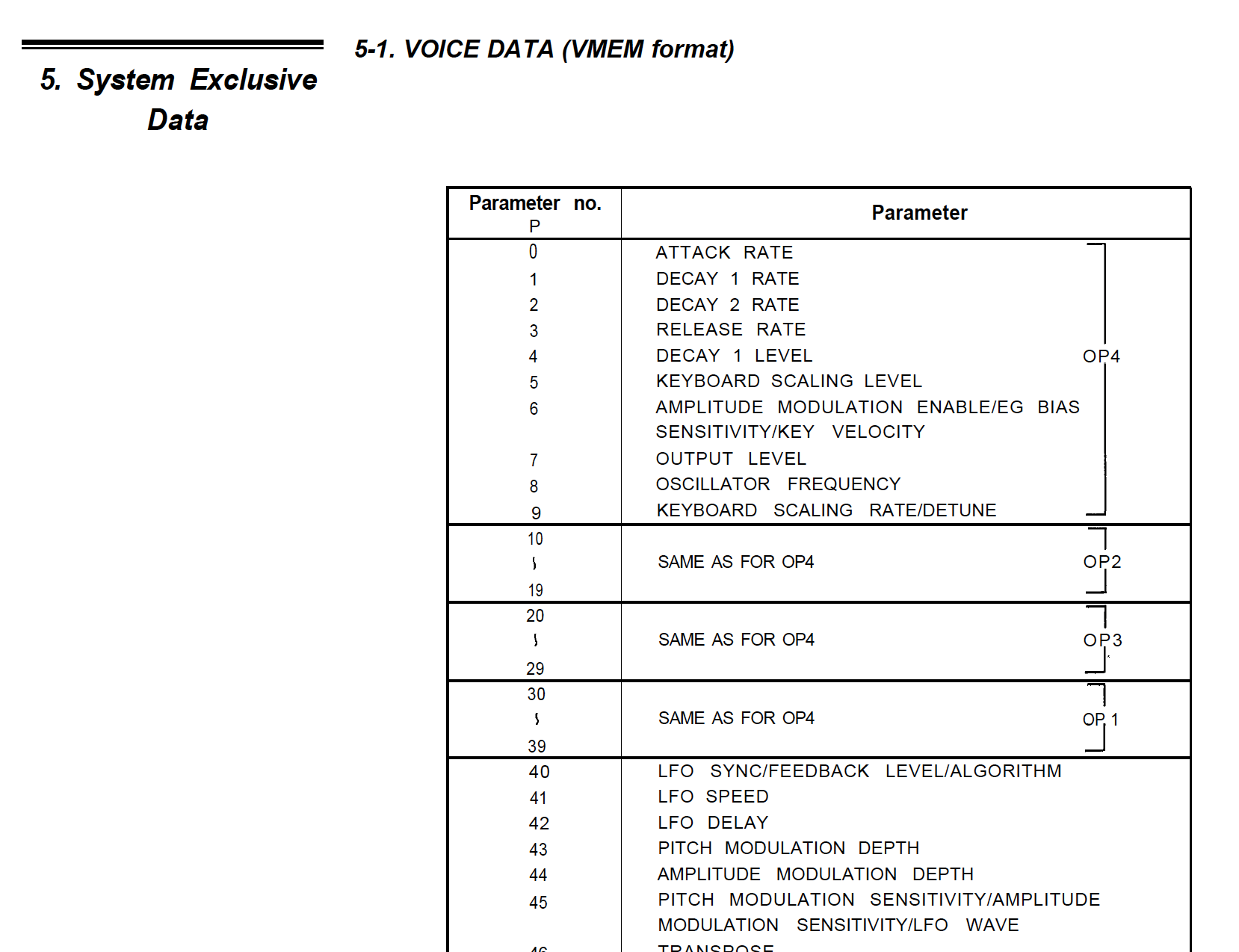
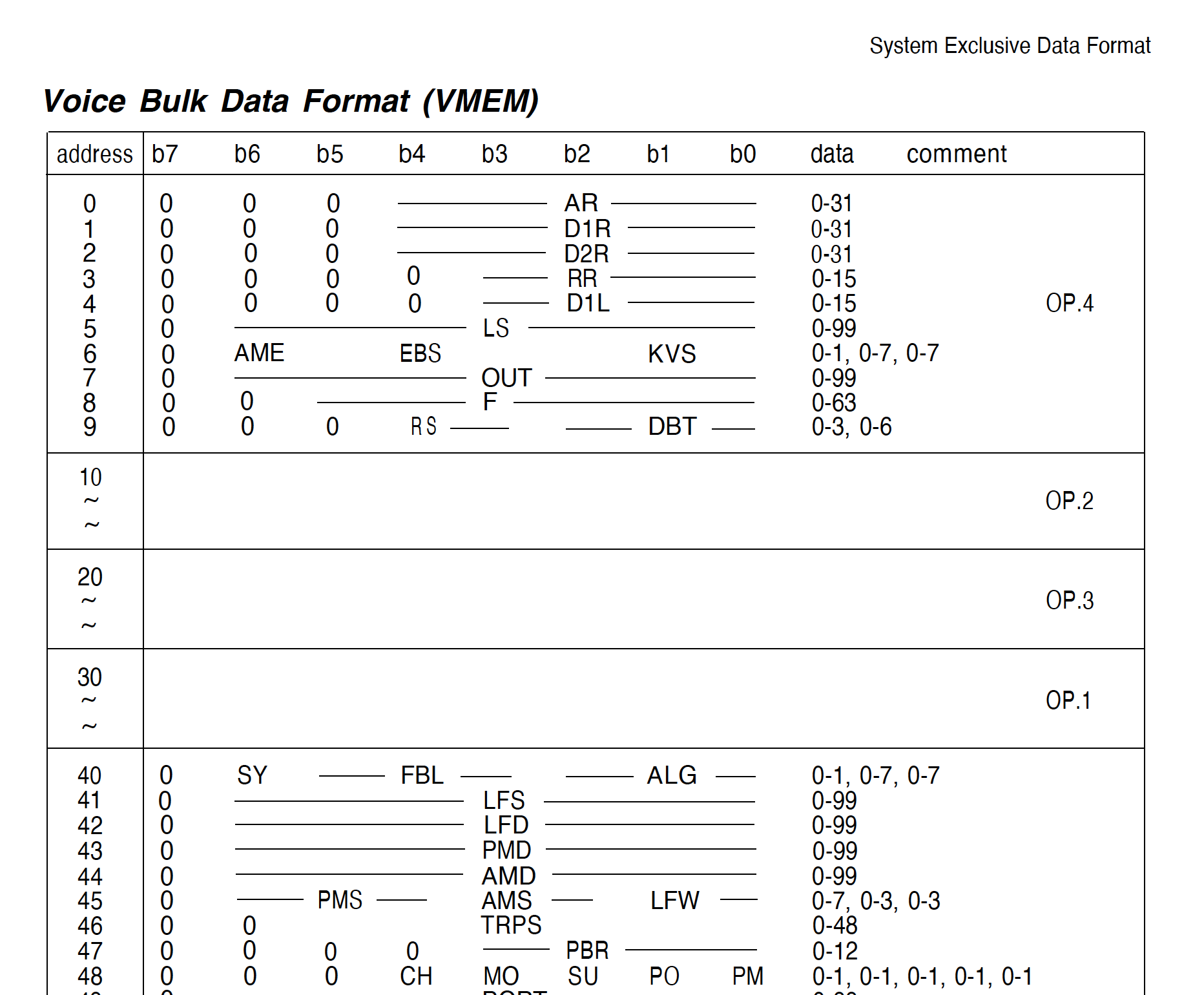
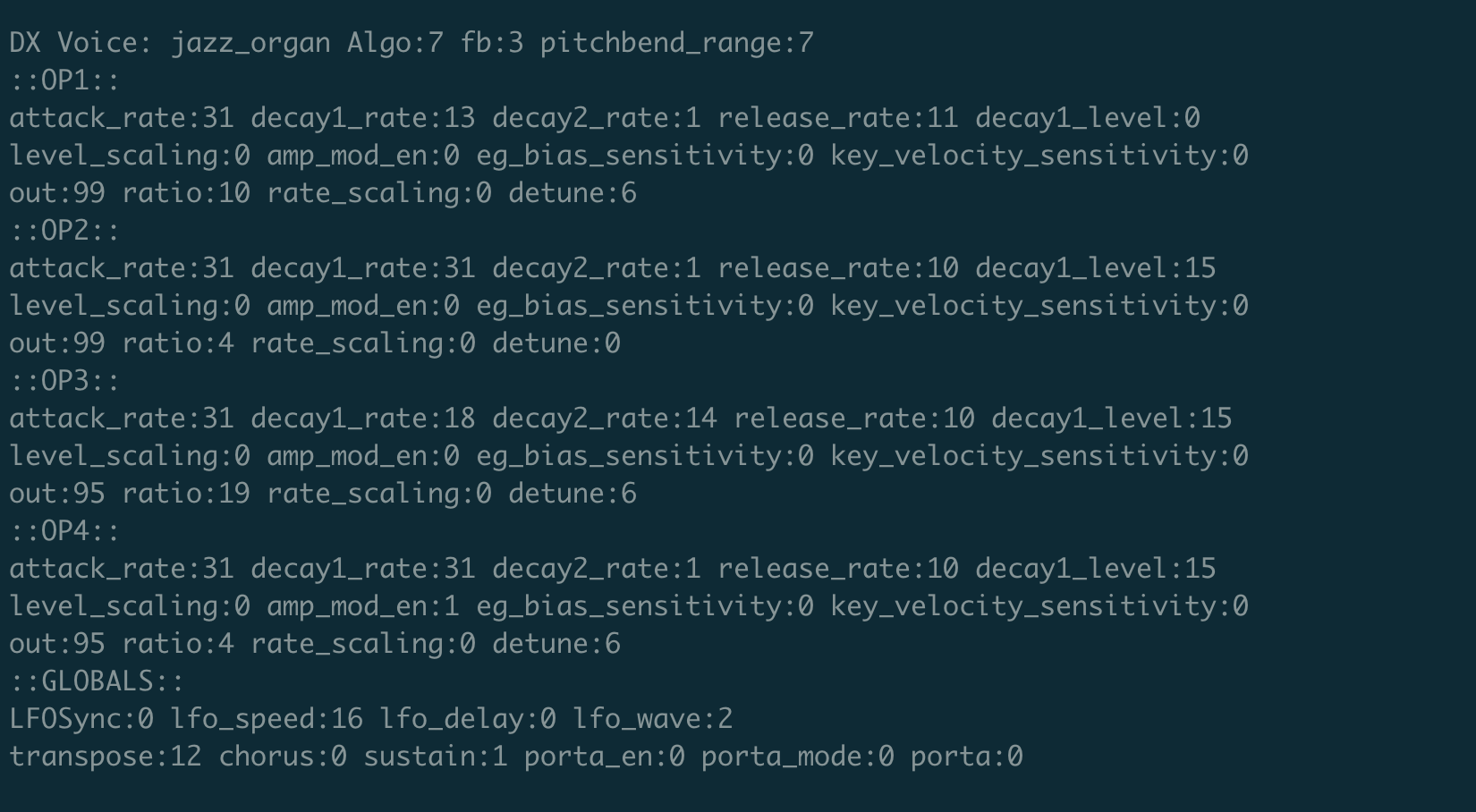
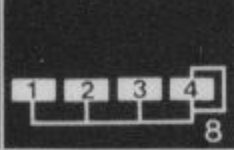


Pretty awesome skateboarding love letter to SF!